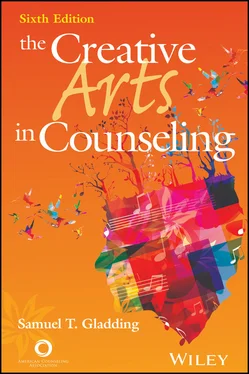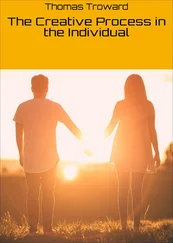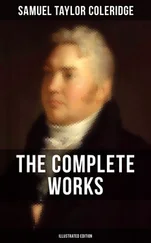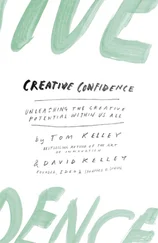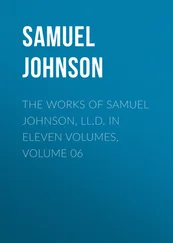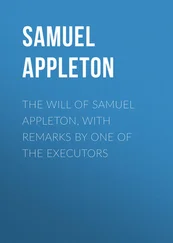Samuel T. Gladding - The Creative Arts in Counseling
Здесь есть возможность читать онлайн «Samuel T. Gladding - The Creative Arts in Counseling» — ознакомительный отрывок электронной книги совершенно бесплатно, а после прочтения отрывка купить полную версию. В некоторых случаях можно слушать аудио, скачать через торрент в формате fb2 и присутствует краткое содержание. Жанр: unrecognised, на английском языке. Описание произведения, (предисловие) а так же отзывы посетителей доступны на портале библиотеки ЛибКат.
- Название:The Creative Arts in Counseling
- Автор:
- Жанр:
- Год:неизвестен
- ISBN:нет данных
- Рейтинг книги:3 / 5. Голосов: 1
-
Избранное:Добавить в избранное
- Отзывы:
-
Ваша оценка:
- 60
- 1
- 2
- 3
- 4
- 5
The Creative Arts in Counseling: краткое содержание, описание и аннотация
Предлагаем к чтению аннотацию, описание, краткое содержание или предисловие (зависит от того, что написал сам автор книги «The Creative Arts in Counseling»). Если вы не нашли необходимую информацию о книге — напишите в комментариях, мы постараемся отыскать её.
*To purchase print copies, please visit the ACA website here
*Reproduction requests for material from books published by ACA should be directed to permissions@counseling.org
The Creative Arts in Counseling — читать онлайн ознакомительный отрывок
Ниже представлен текст книги, разбитый по страницам. Система сохранения места последней прочитанной страницы, позволяет с удобством читать онлайн бесплатно книгу «The Creative Arts in Counseling», без необходимости каждый раз заново искать на чём Вы остановились. Поставьте закладку, и сможете в любой момент перейти на страницу, на которой закончили чтение.
Интервал:
Закладка:
Finally, I am grateful to clients and colleagues over the years who have shared creative ideas with me and helped me to focus more on the importance of the arts in counseling. I especially appreciate the support of my wife, Claire, and our three children. They humored me with jokes and goodwill while this book was in process. I am truly a fortunate individual to be surrounded with so much that is good, growth enhancing, and artistic.
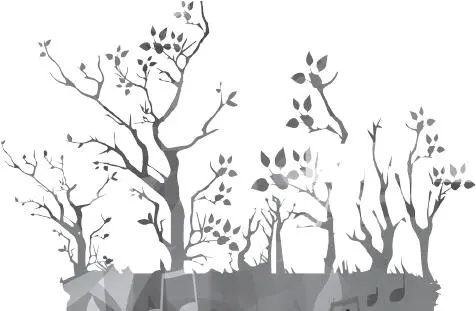
About the Authors
Samuel T. Gladding, PhD,is a professor in the Department of Counseling at Wake Forest University in Winston-Salem, North Carolina. His academic degrees are from Wake Forest (BA, MA Ed), Yale (MA), and the University of North Carolina at Greensboro (PhD).
Before assuming his current position, he held academic appointments at the University of Alabama at Birmingham and Fairfield University (Connecticut). He was also an instructor of psychology at a community college and director of children’s services at a rural mental health center, both of which were in Rockingham County, North Carolina. He is a licensed mental health counselor in North Carolina, a national certified counselor, a certified clinical mental health counselor, and a former member of the Alabama Board of Examiners in Counseling and the North Carolina Board of Licensed Professional Counselors.
Dr. Gladding is the author of a number of publications on counseling, including Becoming a Counselor: The Light, the Bright, and the Serious (2021), Counseling: A Comprehensive Profession (2018), Family Therapy: History, Theory, and Practice (2019), and Groups: A Counseling Specialty (2020). He is the former editor of the Journal for Specialists in Group Work . He has served as president of the American Counseling Association (ACA) as well as three of its divisions: the Association for Counselor Education and Supervision (ACES), the Association for Specialists in Group Work, and the International Association of Marriage and Family Counselors. He has also been president of the American Association of State Counseling Boards and Chi Sigma Iota (Counseling Academic & Professional Honor Society International) as well as chair of the American Counseling Association Foundation.
Dr. Gladding has received numerous recognitions and honors. He is a Fellow in ACA and the recipient of ACA’s Gilbert and Kathleen Wrenn Award for a Humanitarian and Caring Person and Arthur A. Hitchcock Distinguished Professional Service Award. He has also received the Chi Sigma Iota Thomas J. Sweeney Professional Leadership Award and the Association for Humanistic Counseling Joseph W. and Lucille U. Hollis Outstanding Publication Award. In addition, Dr. Gladding is a recipient of the ACES Outstanding Publication Award as well as the ACES Leadership Award. Furthermore, he received the Lifetime Achievement Award from the Association for Creativity in Counseling and the Research Award from the International Association of Marriage and Family Counselors. He is also a Fellow in the Association for Specialists in Group Work and received this association’s Eminent Career Award.
In 2008, the Association for Creativity in Counseling named its Inspiration and Motivation award after Dr. Gladding. In 2015, ACA named its Unsung Heroes award after him.
Dr. Gladding has worked with counseling colleagues in Malaysia, Estonia, Australia, Singapore, Qatar, the United Arab Emirates, the Philippines, Sweden, Austria, the West Indies, and South Africa and was a Fulbright Specialist to Turkey and China. He is married to the former Claire Tillson and is the father of three adult children. He enjoys the arts, creativity, and humor on a daily basis.

Chapter 1 History of, Rationale for, and Benefits of Using the Arts in Counseling
Journey
I am taken back by your words to your history and the mystery of being human in an all-too-often robotic world.I hear your pain and see the pictures you paint so cautiously and vividly.The world you draw is a kaleidoscope ever changing, ever new, encircling and fragile.Moving past the time and through the shadows you look for hope beyond the groups you knew as a child.I want to say, “I’m here. Trust the process,” but the artwork is your own.So I withdraw and watch you work while occasionally offering you feedback and images of the possible.
—Gladding, 1990b, p. 142
Chapter Overview
From reading this chapter you will learn about
The nature of creativity and how the arts have been used historically in helping professions
The rationale for using the arts in mental health
The strengths and limitations of using the creative arts in counseling today
As you read, consider
What your favorite artistic expression is
How your favorite art has helped you be more mentally healthy
How you think you might be able to help someone using your favorite art or theirs
Counseling is a profession that focuses on making human experience constructive, meaningful, and enjoyable both on a preventive and on a remedial level. It is like art in its emphasis on expressiveness, structure, and uniqueness. It is also creative in its originality and its outcomes. Both are novel, practical, and significant.
This book is on the uses of the creative arts in counseling. The creative arts are frequently referred to as the expressive arts (E. Levine & Levine, 2017). They are defined here as art forms that range from those that are primarily auditory or written (e.g., music, drama, and literature) to those that are predominantly visual (e.g., painting, mime, dance, and movement). Many overlaps exist between these broad categories. In most cases, two or more art forms are combined in a counseling context, such as literature and drama or dance and music. These combinations work because “music, art, dance/movement, drama therapy, psychodrama, and poetry therapy have a strong common bond” (Summer, 1997, p. 80).
As a group, the creative arts enhance and enliven the lives of everyone they touch (Neilsen et al., 2016). Cultivation of the arts outside of counseling settings is enriching for people in all walks of life because it sensitizes them to beauty, helps heal them physically and mentally, and creates within them a greater awareness of possibilities. The arts help patients and clients by increasing self-esteem, improving motor coordination and body control, providing relaxation, teaching coping skills, decreasing acting-out behaviors, and developing awareness of emotions or underlying issues (H. Kennedy et al., 2014). “It can be said that . . . creative endeavors offer multidisciplinary ways to give voice to the human internal experience and to act as catalysts for learning about the self and the world at large” (Bradley et al., 2008, p. 44).
In counseling, the creative arts help to make clients more sensitive to themselves and often encourage them to invest in therapeutic processes that can help them grow and develop even further (A. Kennedy, 2008). As such actions occur, participants may give more form to their thoughts, behaviors, and feelings and become empowered. Aside from formal counseling sessions, “acts of artistic expression, in and of themselves, carry their own healing” (MacKay, 1989, p. 300). Involvement with the arts helps individuals recover from traumatic experiences and the stress of daily living. Thus, individuals who are involved with the creative arts inside or outside of counseling usually benefit in multiple ways.
Читать дальшеИнтервал:
Закладка:
Похожие книги на «The Creative Arts in Counseling»
Представляем Вашему вниманию похожие книги на «The Creative Arts in Counseling» списком для выбора. Мы отобрали схожую по названию и смыслу литературу в надежде предоставить читателям больше вариантов отыскать новые, интересные, ещё непрочитанные произведения.
Обсуждение, отзывы о книге «The Creative Arts in Counseling» и просто собственные мнения читателей. Оставьте ваши комментарии, напишите, что Вы думаете о произведении, его смысле или главных героях. Укажите что конкретно понравилось, а что нет, и почему Вы так считаете.
